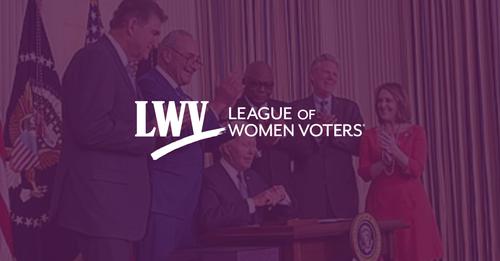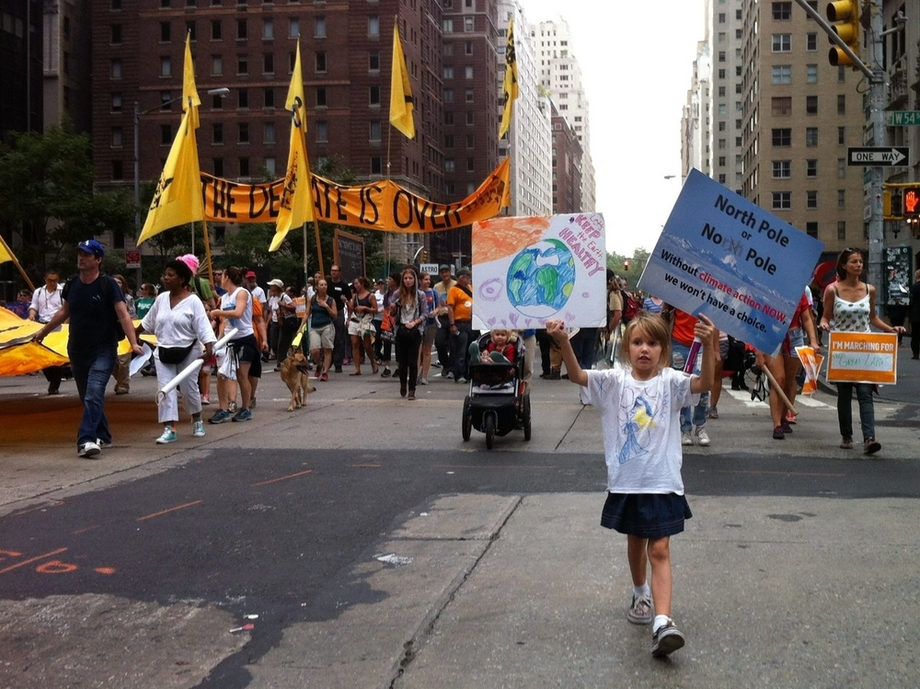
On August 16, the President signed the Inflation Reduction Act of 2022 into law. The law approves more than 700 billion dollars in federal investments aimed at reducing the national deficit, combating climate change, and lowering health care costs.
Both the US Senate and House of Representatives passed it along party lines through a process known as reconciliation. Here’s some information about the process and the law that came out of it.
What is Reconciliation?
Reconciliation is a process by which US Congress can quickly pass legislation on certain national revenues, spending, and/or the federal debt limit. It can move expediently because it faces a special procedure in the Senate.
What is the Reconciliation Process?
The reconciliation process begins when the House and Senate pass a budget resolution (an annual budget plan with taxes and spending guidelines and the debt limit) by a simple majority. The resolution specifies a time period, which is usually ten years.
If the budget resolution includes “reconciliation directives,” it can move to the process of reconciliation. Reconciliation directives are instructions for a particular congressional committee or committees to produce legislation to change revenues, spending, deficits, and/or the public debt limit by specific amounts. If multiple committees receive instructions, they send their bills to the respective House and Senate Budget Committees, which assemble them into a combined reconciliation bill.
,

,
Because a reconciliation bill faces a sped-up procedure in the Senate, it is subject to the Byrd Rule. This allows senators to object to any provision that:
- Doesn’t change revenues, spending, or the debt limit, or for which this change is “merely incidental”;
- Increases the deficit when a committee hasn’t achieved its reconciliation target;
- Is outside the authority of the committee that submitted it;
- Increases deficits for a fiscal year outside the reconciliation window; or
- Makes changes to the Social Security program.
The Senate parliamentarian, who is nonpartisan, decides whether an objected provision violates the rule, in which case it is removed. A vote of 60 Senators can overrule an objection.
,
,
A reconciliation bill requires a simple majority vote in both chambers of Congress and cannot be stalled in the Senate with a filibuster. The Senate has a maximum of 20 hours to debate the bill and then goes into a process known as “vote-a-rama," in which senators can propose amendments. These amendments must be related to the provisions of the bill and cannot increase the deficit, with limited exceptions.
Once all amendments have been heard, the bill goes to a vote. If the Senate is evenly divided, the Vice President has the tie-breaking vote. Once both congressional chambers pass and reconcile any differences in their versions of the bill, it goes to the president to sign or veto.
Congress has passed 28 budget reconciliation bills since the process began in 1974, 22 of which the then-president signed. Both major political parties have used the reconciliation process, and 13 of the 22 bills signed into law were enacted when the House, Senate, and presidency were not controlled by the same party. Reconciliation bills included ones that made major spending cuts under President Reagan and large tax cuts under President George W. Bush in 2001 and 2003. In 2016, a reconciliation bill aimed at repealing major provisions of the Affordable Care Act (ACA) passed in the House and Senate but was vetoed by President Obama. In 2017, reconciliation bills with similar provisions passed the House but failed in the Senate.
What is in the Inflation Reduction Act?
The Inflation Reduction Act of 2022 (H.R. 5367) is the FY2022 reconciliation bill, which sets out to reduce the national deficit, address climate change and invest in clean energy, lower the cost of health insurance and prescription drugs, and reform and enforce the tax code, with provisions through 2031.
Inflation Reduction Act Spending
The Inflation Reduction Act would invest:
-
$300+ billion in deficit reduction,
-
$369 billion in climate and energy-related programs, and
-
$64 billion in extending the expansion of Affordable Care Act premium subsidies.
Deficit Reduction
The federal deficit is the amount of money that the federal government spends beyond what it raises from taxes. The Penn Wharton Budget Model estimates that the law will have a net deficit reduction of $264 billion over ten years.
Climate Change and Clean Energy
The law’s energy-related provisions are estimated to reduce US carbon emissions by roughly 40%, compared to 2005 levels, by 2030. They include:
- Tax credits for the production and related manufacturing of solar panels, wind turbines, batteries, and other renewable energy projects;
- Rebates for electric vehicles (e.g. $7,500 for new and $4,000 for used electric vehicle purchases) and increasing home energy efficiency (e.g. more efficient heat pumps and water heaters);
- Incentives for oil and gas companies to reduce methane emissions, and fees on excess methane emissions;
- Investments in a clean energy accelerator to use public and private funds for clean-energy technologies and infrastructure;
- New offshore lease sales for oil and gas;
- Extended funding for the Black Lung Disability Trust Fund, providing benefits to nearly 25,000 coal miners with black lung disease; and
- Subsidies for emission reduction in agriculture and chemical, steel, and cement plants.
,

,
Affordable Care Act Premium Subsidies
The Affordable Care Act (ACA) offers premium tax credits, which are income-based subsidies to lower an individual or family’s monthly out-of-pocket payments for health insurance, through marketplaces set up by the ACA. The American Rescue Plan enhanced these subsidies by expanding eligibility and reducing the percentage of income that people must pay each month for insurance. The Inflation Reduction Act would extend this expansion through 2025, preventing an estimated 3.1 million people (about the population of Arkansas) from losing their coverage in 2023 and millions of others from seeing an increase in their premiums.
Inflation Reduction Act Revenue
The Inflation Reduction Act would raise:
- $265 billion through prescription drug pricing reform,
- $222 billion through a 15% corporate minimum tax,
- $52 billion through loss limitation extension,
- $74 billion through a 1% stock buyback tax, and
- $124 billion through enhanced IRS tax enforcement.
Prescription Drugs
The bill’s drug pricing provisions lower prescription drug costs for people with Medicare by:
- Requiring the Secretary of the US Department of Health and Human Services to negotiate Medicare drug prices for certain expensive drugs, including 10 in 2026 and 20 by 2029;
- The specific drugs have not yet been identified and will be selected from a pool of drugs with the highest total Medicare Parts D and B spending.
- Requiring drug companies to pay rebates if their prices outpace inflation for Medicare beneficiaries;
- Limiting monthly insulin copays to $35 for Medicare beneficiaries;
- Capping out-of-pocket drug costs at $2,000 for Part D beneficiaries starting in 2025;
- Cutting the 5% coinsurance for Part D catastrophic coverage in 2024;
- Expanding eligibility for Part D Low-Income Subsidy full benefits in 2024;
- Limiting annual increases in Part D premiums to 6% for 2024-2030; and
- Covering adult vaccines for Medicare beneficiaries and improving access for Medicaid and CHIP recipients.
Corporate Minimum Tax
The bill imposes a 15% minimum tax on corporations with an annual profit of at least $1 billion. Businesses owned by private equity would be exempt from this tax and the Joint Committee on Taxation projects that the tax would affect approximately 150 corporations.
Loss Limitation Extension
The bill extends a limit on the number of business losses that individual taxpayers can deduct on their state and local taxes for two years.
,
Stay Updated
Keep up with the League. Receive emails to your inbox!
,
Excise tax on stock buybacks
Publicly traded corporations have shareholders that own stock in them. When a corporation profits, it can pay its shareholders dividends, which are taxed immediately, or offer to buy back a certain number of their shares, which raises the value of the company’s remaining shares. During stock buybacks, if shareholders don't sell their shares, they are not taxed at the time, meaning that their wealth increases but their taxes do not.
The Inflation Reduction Act would impose a 1% tax at the time of stock buybacks, starting next year.
IRS tax enforcement
The bill invests $80 billion in the IRS with the stated purpose of enabling them to ensure that high-income households and corporations pay the taxes they owe.
The League of Women Voters on Climate Change and Health Care
The League believes that climate change is a serious threat facing our nation and our planet. It believes that the government should move ahead on initiatives to reduce emissions of heat-trapping gases like carbon, methane, and other air toxins to reduce the threat of global climate change, combat air pollution, increase energy security, and create new jobs.
The League also maintains that every US resident should have access to a basic level of quality health care at an affordable cost.
Special interest groups have varied estimates of the scale of impact of the Inflation Reduction Act of 2022 but agree that it makes major strides to address climate change, health care coverage, and prescription drug costs.